– edited by Dr. Manish Bhatia
Circa 1804
I am walking on a deserted lane covered with paved stones. On both sides of the street, the Gothic styled houses stand very close to each other. Most of them are old, small two-story buildings with gable roofs. The windows are all closed. The smell of smoke, horse and chicken manure mildly fills the air. The smoke from the chimneys gives the houses a melancholic look. We are quite close to the centre of this city; still, the streets are deserted. Only every now and then a person passes by, gives friendly greetings, and then rushes forward to reach his destination. It is cold outside…soon it will snow. I have been here since few weeks and this dreary picture is the same since I arrived.
We are in the city of Torgau, Germany, about 50 km north-east from the next large town Leipzig. It is December, just a week to go until New Year’s Day.
Even though the city is pretty large and spaciously structured, there are less than 6000 inhabitants. The houses are almost entirely surrounded by the water of river Elbe.
Suddenly, the eerie silence of this sleeping town is broken by the sounds of hoofs stepping on the ground, and of carriages clattering along the street.
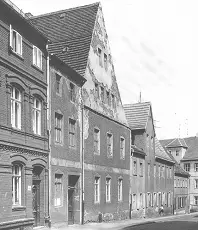
Intrigued by its history, I meet its care-taker and he invites me in.
I find out that this building has seen several architectural and structural changes, especially at the end of the 16th century, and again in the second half of the eighteenth century. The property covers around 800 square meters. To the left of the building, I see a passage and a gateway to the courtyard, which is located behind the house. Stable, cowshed, chicken coop, pigsty cover, and the vegetable garden are at the back of the house. I also see fruit trees and grapevine.
At the sides of the entrance and towards the courtyard, the house has barred windows. Towards the courtyard, there is a door leading into the house, and a second one to the basement stairs. The entrance door to the house opens to a lobby-like front room. Separated by a wooden wall, there is the kitchen with a stove with an iron top, an oven for baking below and one for roasting above.
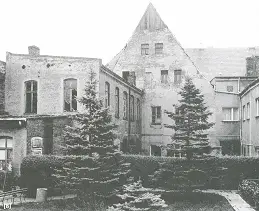
We return downstairs and watch what goes on in front of the house, where the carriages and carts have just arrived.
Aside from a few helpers, I see an aristocratic person about 50 years of age. Beside him, are his wife, 41, and nine children, between 5 to 21 years old. The name of the head of the family is Dr. Samuel Hahnemann, the new owner of this house. He will use three rooms and 4 chambers for his family and one room and one chamber for his private homeopathic clinic. The area used for the family seems just sufficient for a living in cramped conditions.
Time flies… It’s 1811 now.
Dr. Hahnemann and his family are leaving Torgau for good. The main reason is that a war is getting closer. Torgau has been made into a fortress.The appearance of the town has completely changed by the erection of new fortifications. To give space to them, the town gates and walls, together with the outer suburbs have been destroyed; this needed to be done so that the approaching enemies cannot hide and be fired at. The fortifications have enclosed the town by a series of outer redoubts, entrenchments, walls and forts. Dr. Hahnemann knows that he cannot grant safety to his family any more.
And he was so right: In 1813 siege, firing and bombardment, as well as epidemics, hit the city of Torgau. About 30000 French soldiers and 1122 peaceful inhabitants lost their lives.
It’s the year 2014… another lifetime for me… and I am once again standing near Hahnemann’s house thinking about the times that he spent here.
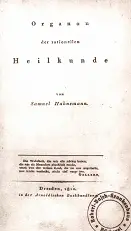
Another fundamental work, which got published between 1811 until 1821 was begun within the walls of this building: The development of the Materia Medica Pura.
But all of it began with a series of important essays. As Haehl (author of one the most detailed Hahnemann biographies) would say: “His chief works were produced in the Torgau period, within which every detail of his new system was taking shape. Into these essays were instilled everything he had discovered in his restless wandering, deriving from his provings, his thinking and his studies. His ‘Fragmenta de viribus medicamentorum positivis (in Latin, 1805) presented the first published details of 27 provings, including Pulsatilla, Ignatia, Aconite, Drosera and Belladonna. This two-volume work gives us, for the first time, an insight into the remarkable and so far unknown methods of investigation, which he employed. It supplies reports on the tests of twenty seven medicines, the results of years of experiment on himself and his family.” From the considerations he had arrived at in his wandering years, Hahnemann had sought to develop a medical system that relied solely on single drugs in harmless doses and based upon pure observation, empiricism and experiment.
Then came The Medicine of Experience in 1805, which was in every respect a forerunner of his Organon. His other essays of 1805, 1808 and 1809 amount to magnificent critiques of every mode of medical treatment and discussions of why similia and single drugs are superior, and always have been.
In 1806, his last translation from the Latin, Albrecht von Haller’s Materia medica, signalled the end of the first phase of his life: the study of the views of others, and the beginning of a new phase: of being his own man, and of formulating and defending his own views.
During his stay in Torgau, Hahnemann, through his detailed and exhaustive studies, laid out a systematic and point-by-point demolition of every element in ancient and medieval medicine, leaving single drugs and similars as the only useful remnants. He was able to build brilliant essays leading directly to the Organon, which is his detailed exposition of the whole conceptual and practical realm of homeopathy.
The people of Torgau forgot about the stay of Hahnemann in the city for the next two hundred years.

Now, as the building was considered a historic monument, it was put under a preservation order. From 1992 to 2007, the house got completely renovated and improved with the help of a new organization and support from many homeopaths and homeopathic organizations. One of the objectives for the project was to rebuild the house to restore its architecture according to Hahnemann’s time. The renovation of the rooms was deeply influenced by the functional demands of their public use after completion. Preservation of original elements wherever possible was an important task to follow.
The room which is located to the north-east was the room where Dr. Hahnemann stored his equipment and medicines. The room has remained unchanged since 1485. The remaining room on the ground floor seems to have been the private clinic of Dr. Hahnemann. Large window recesses with the conspicuous console dominate the room together with the late-Gothic ceiling made of beams. Since this has been the study and working room of the founder of homeopathy, the character of the room had to be preserved. This was probably the room where Hahnemann wrote the first edition of his Organon of Medicine.

In the south-east we find another former living room. We see remarkable wall- paintings of the 16th century. They had to be uncovered, repaired and sealed. The renaissance-style of the room had to be preserved. The attic storey exists since the 15th or 16th century. Original, half-timbered walls and the low height of the ceiling present the appearance of the renaissance.
After Dr. Hahnemann left Torgau for good, there had been a ‘homeopathic vacuum’ for 200 years. Only with establishment of the International College for Homeopathy, Torgau, homeopathy returned to the city in August 30, 2003. Starting in October 2007, the college was based in Pfarrstr. 3, the former house of Dr. Hahnemann.

The college associated with other institutions like Homeopathic Foundations, Homeopaths Without Borders, Hahnemannia, the Robert-Bosch-Foundation, Association of Classical Homeopaths in Germany and numerous other international institutions.
One of the publications of the college is still available: “Retracing the Origins of Homeopathy—The Travel Guide”.
This is a reliable guide for those who are in the process of planning their homeopathic journey (a pilgrimage) in Germany to visit all the places where Hahnemann and other early homeopaths lived and worked.
The dream run for Hahnemann’s house came to an end in 2014, when due to limited international support and students, the homeopathic college running at the Hahnemann’s house in Torgau closed, and its functioning organisation dissolved. Now we are on the verge of losing this historical building where Homeopathy was born.
To save this historic building for homeopathic purposes, a new organization has been found. The moving spirit behind the new activities is Carola Scheuren, who was a very active member of the original college. She and a few other members found the International Hahnemann Centre Torgau e. V. The main purpose of this new organization is that Hahnemann’s house at Pfarrstr. No. 3 in Torgau, Germany, will remain the centre of homeopathy – The place where homeopathy took birth, should stay with the homeopathic community, and should remain the centre for inspiring future generations of homeopaths.
The new organization is our last chance to save Hahnemann’s house at Torgau and it needs your support. It will be only possible if the homeopathic community will stick together and fill the house with spirit, knowledge, activities, and also with financial support. If the new organization will grow with new members, then all the goals can be reached within a short period of time.
If we, the homeopaths in this world will fail now, the house will be lost for our community for good.
If you want to be part of the only homeopathic organization which is based at the birthplace of homeopathy, then come and join. To support the new organization, and to save Hahnemann’s house, please become its member. There is a small membership fee that will help us keep the organisation active, and preserve and develop the house for homeopathic events. Just visit www.hahnemannzentrum-torgau.de and click for the language of your choice. Then download the application form for membership and send it to the organization. That’s all you need to do. You just can be a passive member, if it is appropriate for you. Here is teh direct link to the membership form too :
Just fill it, and send it back to [email protected]
If you also want to share time, ideas and knowledge, choose for active membership. The organization is still in the process of development; this gives you the chance to be part of it from the very beginning! And if the homeopathic community becomes aware of this unique historic chance, something extraordinary wonderful will develop.
Never again homeopathy will get a home like this. In this home of Hahnemann, there is room for YOU! There is not much time to waste. Our small individual efforts can become the collective force to rescue the house for OUR purpose. Come in and walk where Dr. Hahnemann had put his feet!
Your International Homeopathy Centre e. V. is here:
www.hahnemannzentrum-torgau.de
Any further information can be inquired via email: [email protected]
You can also make donations via PayPal by clicking on the ‘Donate’ button on the left column of the website.
Do it now because Hahnemann’s house at Torgau needs your support!
Please forward this to all your homeopathic friends too.
References:
Jürgen Herzog: Samuel Hahnemann—Seine Lebensstationen Schildau und Torgau
Bernd Blume, Anita Baier, Karl-Heinz Lange: The City of Torgau
Peter Morell: A Brief Biography of Samuel Hahnemann
Richard Haehl: Samuel Hahnemann—Sein Leben und Schaffen
Pharmazeutische Zeitung Ausgabe 01/2011
Torgauer Zeitung / Förderverein: Drawing of the fortress (1811)

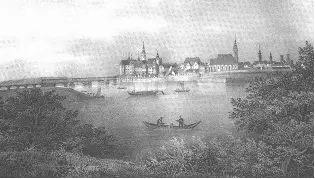
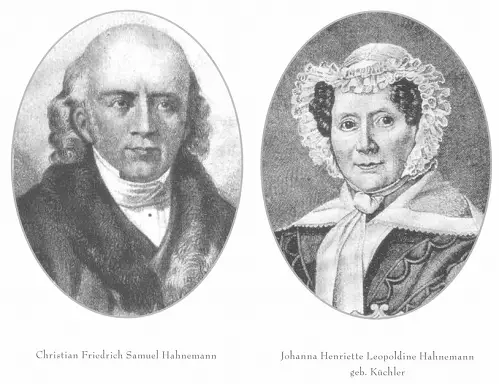




Thank you Sigi for your time, energy and passion on this project. Preserving a part of our history is important to all of us.
How much time, energy and passon many good people have spent to preserve this home of Dr. Hahnemann can also be seen on the website of the International Hahnemann Center Torgau e. V.:
. Here you see a few more pictures.
Expenses mount up to more than 3 Million US $ to save the building from the wrecking ball and to restore the main building acc to the time when the founder of homeopathy and his family lived here. Plus, an additional buidling and technical equipment were added so that the house can serve homeopathic purposes even in the modern world.
The house is ready, the Organization is ready, but still it needs members from all over the world to support the activities in serving homeopathy and maintaining the house.
Therefore once again, YOU ALL are invited to become a member of the Hahnemann Center, even if you live far away. With your spirit, Hahnemann’s medicine will be preserved and spread in today’s world from were its history has started. To keep the house in the spirit of homeopathy does not only need effort. It needsS OUR presence, OUR love for homeopathy. The doors of Hahnemann’s House are wide open for YOU – also if you just pass by as a visitor…
Siegfried Letzel
And in an extra box, from the bottom of our hearts, we say thank you to you, Alan and Manish, for YOUR time, energy and passion for the sake of homeopathy, especially for your support of Hahnemann’s House in Torgau, Germany.